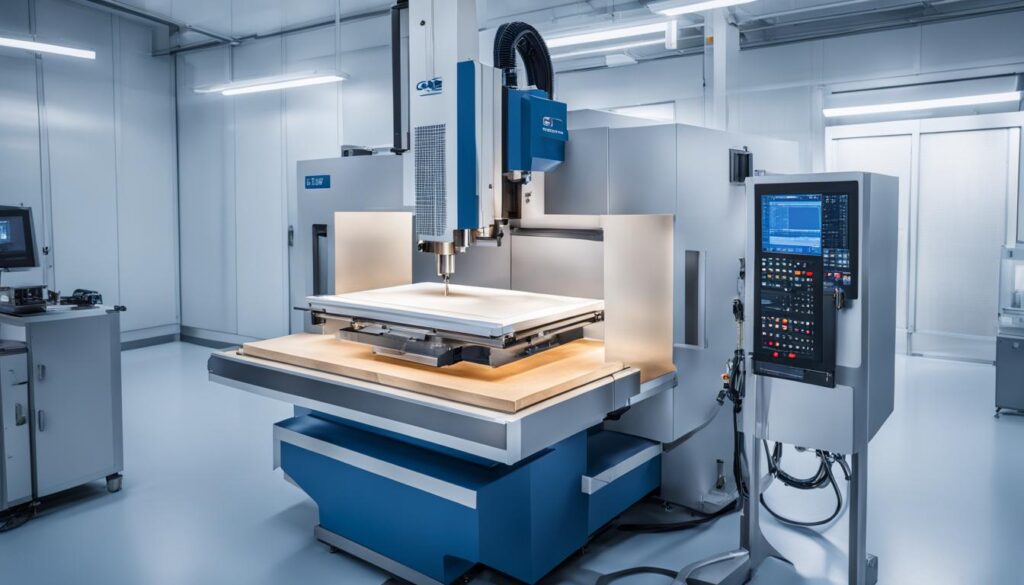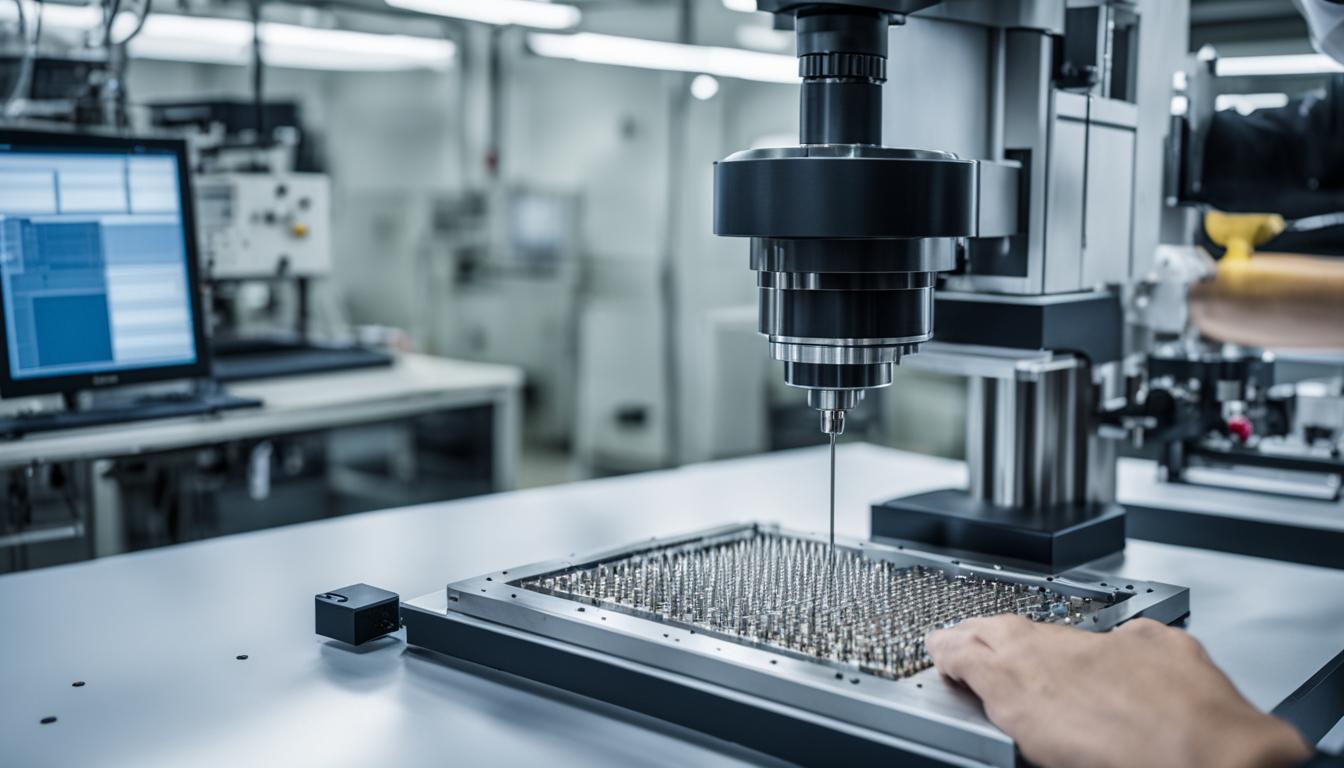CNC milling is revolutionizing the field of biomedical engineering with its precision and versatility. This advanced machining technique is being used for the production of a wide range of medical devices, including surgical instruments, dental implants, and diagnostic equipment. The demand for CNC milled medical components is rapidly increasing, as it offers unmatched precision, material versatility, and adherence to medical standards. In addition, CNC milling allows for cost-effective prototyping, shorter production cycles, and flexibility in adapting to evolving medical science. The use of CNC milling in biomedical engineering is expected to see significant breakthroughs and applications in 2024, as the healthcare sector continues to seek innovative tools and technologies to improve patient care.
Precision and Accuracy in CNC Milling for Medical Device Manufacturing
CNC milling is widely recognized for its unmatched precision and accuracy in the field of medical device manufacturing. This advanced machining technique allows for the production of medical components with micron-level tolerances, ensuring that each piece meets exact specifications. The ability to achieve such tight tolerances is crucial in the manufacturing of surgical tools, dental implants, and other medical devices where precision is paramount.
In addition to precision, CNC milling offers exceptional repeatability, ensuring that every piece produced is consistent in quality. This repeatability is particularly important in mass production, where the ability to replicate precise dimensions is essential for maintaining high-quality standards.
Furthermore, CNC milling enables the creation of complex geometries that are difficult to achieve using traditional manufacturing methods. With CNC milling, medical engineers have the flexibility to create intricate and customized medical parts that meet the unique needs of each patient. Whether it’s a complex bone plate or a precise dental drill, CNC milling offers the versatility to manufacture a wide range of medical devices.
Micron-level Tolerances and Complex Geometries
| Benefits of CNC Milling in Medical Device Manufacturing | |
|---|---|
| Unmatched precision with micron-level tolerances | |
| Exceptional repeatability for consistent quality | |
| Capability to create complex geometries |
Table: Benefits of CNC Milling in Medical Device Manufacturing
Material Versatility in CNC Milling for Medical Devices
CNC milling machines offer an impressive level of material versatility when it comes to manufacturing medical devices. From metals to polymers, CNC milling can shape and form a wide range of medical-grade materials. This versatility is crucial in ensuring that medical devices meet the necessary standards and requirements for biocompatibility, sterilizability, and non-toxicity.
Medical-grade materials used in CNC milling must possess specific physical and mechanical properties, such as tensile strength, hardness, and chemical resistance. CNC milling allows for the precise milling of these materials, ensuring that the final medical devices maintain their integrity and functionality. This level of material versatility enables the production of customized medical devices that cater to the unique needs of individual patients.
For example, in the production of dental implants, CNC milling can create intricate structures that mimic natural teeth, providing patients with a comfortable and aesthetically pleasing solution. Similarly, CNC milling is essential in the manufacturing of surgical instruments, where precision and durability are critical factors. By utilizing CNC milling’s material versatility, medical device manufacturers can meet the complex demands of the healthcare industry and deliver high-quality products to improve patient outcomes.
Table: Comparison of Material Properties in CNC Milling for Medical Devices
| Material | Biocompatibility | Sterilizability | Toxicity | Physical and Mechanical Properties | Chemical Resistance |
|---|---|---|---|---|---|
| Stainless Steel | High | Yes | Low | High tensile strength, corrosion resistance | Resistant to common sterilization agents |
| Titanium | Excellent | Yes | Low | Lightweight, high strength | Resistant to bodily fluids and chemicals |
| Polyetheretherketone (PEEK) | Good | Yes | Low | High heat resistance, low friction | Chemically inert |
| Polylactic Acid (PLA) | Good | Yes | Low | Biodegradable, low cost | Not suitable for harsh chemical environments |

The table above showcases a comparison of material properties relevant to CNC milling for medical devices. It highlights the diverse range of materials that can be effectively milled using this advanced technique, along with their respective biocompatibility, sterilizability, toxicity, physical and mechanical properties, and chemical resistance. Manufacturers can choose the most suitable material based on the specific requirements of the medical device they are producing, ensuring optimal performance and patient safety.
Standards and Challenges in CNC Milling for Medical Devices
The production of medical devices using CNC milling is subject to stringent standards and regulations to ensure the safety and quality of the final products. One of the key standards in this field is ISO 13485, which sets out the requirements for a quality management system specific to the medical device industry. Compliance with ISO 13485 ensures that manufacturers consistently meet regulatory requirements and adhere to best practices throughout the production process.
Another important regulatory body is the U.S. Food and Drug Administration (FDA), which enforces regulations on medical devices intended for human use in the United States. The FDA’s Quality System Regulation (QSR) covers various aspects of medical device manufacturing, including design controls, production controls, and packaging and labeling requirements. Adherence to FDA regulations is crucial for ensuring the safety and efficacy of medical devices in the market.
When it comes to CNC milling for medical devices, there are specific challenges to overcome. One such challenge is the milling of medical-grade materials. These materials often have unique properties, such as biocompatibility, sterilizability, and specific physical and mechanical characteristics. CNC milling must be carefully performed to preserve these properties and ensure that the final product meets the required standards. Additionally, specialized tooling and machining techniques may be necessary to effectively mill medical-grade materials and achieve the desired precision and quality.
| Standards | Regulatory Body |
|---|---|
| ISO 13485 | International Organization for Standardization (ISO) |
| FDA regulations | U.S. Food and Drug Administration (FDA) |
Overall, while CNC milling offers numerous benefits for medical device manufacturing, it is essential to navigate and adhere to the relevant standards and regulations. Compliance with these standards ensures the production of high-quality and safe medical devices that meet the needs of patients and healthcare professionals.
Key Applications of CNC Milling in Biomedical Engineering
Within the field of biomedical engineering, CNC milling is widely used in various applications that contribute to advancements in patient care and medical technology. Some key applications of CNC milling include:
Surgical Instruments:
CNC milling plays a crucial role in the production of surgical instruments. It ensures the precision and sharpness of blades, handles, and other intricate components, resulting in high-quality surgical tools that healthcare professionals rely on for precise and successful procedures.
Orthopedic Implants:
For orthopedic implants, CNC milling allows for the creation of custom-fitted joints, bone plates, and other orthopedic devices. This customization ensures a perfect fit for each individual patient, resulting in improved comfort and longevity of the implants.
| Application | Description |
|---|---|
| Dental Instruments and Implants | CNC milling is instrumental in the production of dental instruments, crowns, drills, and implants. It enables the creation of customized solutions that meet the unique needs of each patient, improving dental health outcomes. |
| Diagnostic Equipment | CNC milling is used in the manufacturing of diagnostic equipment such as ultrasound probes and components for MRI machines. Precise machining ensures the accuracy and reliability of these vital medical devices. |
| Prosthetics and Exoskeletons | CNC milling plays a significant role in the production of prosthetics and exoskeletons, providing mobility and enhancing the quality of life for individuals with limb loss or mobility impairments. |
| Robotic Surgery Components | CNC milling is essential in the manufacturing of components for robotic surgery systems. These components enable precise surgical movements and enhance visualization during complex surgical procedures. |
These applications highlight the versatility and importance of CNC milling in the field of biomedical engineering. By leveraging the precision, accuracy, and material versatility of CNC milling, healthcare professionals can continue to advance patient care and improve medical outcomes.

The Future of CNC Milling in Biomedical Engineering
The field of biomedical engineering is constantly evolving, and one of the key technologies driving its progress is CNC milling. With its precision and versatility, CNC milling has already made significant breakthroughs and applications in the production of medical devices. But what does the future hold for this cutting-edge technology?
The future of CNC milling in biomedical engineering is promising, thanks to ongoing technological advancements and dedicated research and development efforts. These advancements aim to enhance productivity, improve tool life, and reduce costs associated with medical device manufacturing. By optimizing machining processes and exploring innovative technologies, CNC milling will continue to push the boundaries of what is possible in biomedical engineering.
One of the main areas of focus for the future of CNC milling in biomedical engineering is productivity. Researchers and engineers are working on developing more efficient machining techniques that can increase the speed and output of CNC milling machines. By streamlining the manufacturing process, productivity can be enhanced, allowing for faster production of medical devices without compromising quality or precision.
Another important aspect being addressed in the future of CNC milling is tool life. The longevity and reliability of cutting tools used in CNC milling are crucial for maintaining consistent quality and reducing downtime. Ongoing research aims to develop new materials and coatings that can prolong tool life, reducing the frequency of tool changes and improving overall efficiency.
Cost reduction is also a key consideration for the future of CNC milling in biomedical engineering. As the demand for medical devices continues to rise, finding ways to lower production costs without sacrificing quality becomes increasingly important. Through advancements in machining techniques, material selection, and process optimization, the cost of CNC milling for medical device manufacturing can be reduced, making these innovative solutions more accessible to patients.
In conclusion, the future of CNC milling in biomedical engineering looks bright. With ongoing research and development efforts focused on technological advancements, productivity improvement, tool life enhancement, and cost reduction, this cutting-edge technology will continue to revolutionize the healthcare industry. By harnessing the potential of CNC milling, biomedical engineers will be able to produce advanced medical devices that improve patient care and outcomes.
